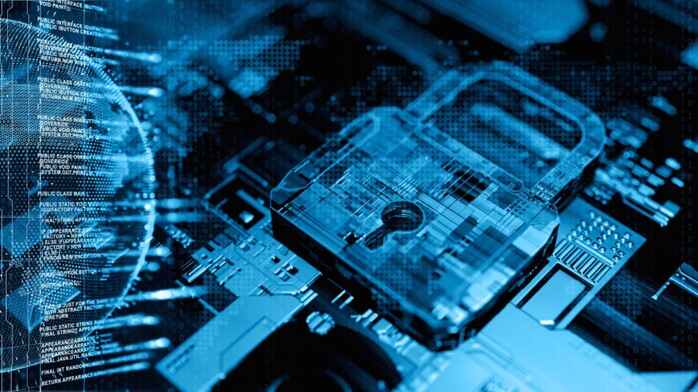How IoT is used in Blockchain and IoT Security(A powerful Guide2024)
Strengthening Security: The Convergence of IoT and Blockchain

Strengthening Security: The Convergence of IoT and Blockchain
How IoT is used in Blockchain and IoT Security: As the Internet of Things (IoT) continues its rapid expansion, the need for robust security measures becomes increasingly critical. In this context, the convergence of IoT and blockchain technology is gaining prominence as a means to enhance security and privacy in the IoT ecosystem.

In this article, we will explore how IoT is used in conjunction with blockchain to fortify the security of connected devices and data. https://enoughinfo.net/how-iot-is-used-in-blockchain-and-iot-security
Understanding the IoT Security Challenge
The proliferation of IoT devices has introduced a plethora of security challenges. These devices often collect and transmit sensitive data, creating vulnerabilities that malicious actors can exploit. Some common IoT security concerns include: How IoT is used in Retail (A Complete Guide2024)
1. Data Privacy: IoT devices collect personal and sensitive data, such as location information or health records. Protecting this data from unauthorized access is paramount.
2. Device Authentication: Ensuring that only authorized devices can communicate with the network is a critical concern. Unauthorized devices could potentially disrupt operations or gain access to sensitive information.
3. Data Integrity: Verifying the integrity of data collected from IoT devices is essential. Tampered data could lead to incorrect decisions or actions.
4. Security Updates: Many IoT devices lack the capability for regular security updates, leaving them vulnerable to known vulnerabilities over time.
The Role of Blockchain in IoT Security
Blockchain technology, originally developed to secure cryptocurrency transactions, has found its way into IoT security due to its unique properties: https://enoughinfo.net/how-iot-is-used-in-blockchain-and-iot-security
1. Decentralization: Blockchain operates on a decentralized ledger, making it less vulnerable to single points of failure and reducing the risk of unauthorized data alterations.
2. Immutable Records: Once data is recorded on a blockchain, it becomes nearly impossible to alter. This characteristic ensures the integrity of data collected from IoT devices.
3. Authentication and Authorization: Blockchain can be used for device authentication, ensuring that only authorized devices gain access to the network. Smart contracts can manage permissions and access control.
4. Privacy and Anonymity: Private and permissioned blockchains enable selective disclosure of data, offering privacy features that are important in sensitive IoT applications.

Use Cases of Blockchain and IoT Security
1. Supply Chain Management: Blockchain technology is employed to track the journey of products in the supply chain, ensuring that they haven’t been tampered with and verifying the authenticity of goods.
2. Smart Contracts: Smart contracts are used to automate and enforce agreements between IoT devices. For example, a smart contract can govern the delivery of goods based on predefined conditions and data from IoT sensors. How IoT is used in Environmental Monitoring: (Complete Guide 2024)
3. Data Integrity Verification: Data collected from IoT sensors is hashed and stored on the blockchain. Any tampering with the data will be evident through the blockchain’s immutability.
4. Identity and Access Management: Blockchain helps secure device identity and grant access to authorized devices. This is especially critical in industrial IoT applications.
Challenges and Considerations
While blockchain technology offers promising solutions for IoT security, it is not without its challenges:
- Scalability: As IoT devices generate vast amounts of data, the scalability of blockchain networks must be addressed to handle the increased volume of transactions.
- Energy Consumption: Some blockchain consensus mechanisms can be energy-intensive. In the context of IoT, this can be a concern for battery-powered devices.
- Integration Complexity: Integrating blockchain with existing IoT systems can be complex and require additional resources and expertise.
- Regulatory Compliance: Blockchain often involves complex legal and regulatory considerations, especially when used in environments that deal with sensitive data.
In conclusion,
How IoT is used in Blockchain and IoT Security: the integration of IoT and blockchain technology offers a promising solution to address the security challenges that come with the widespread adoption of connected devices. https://enoughinfo.com/how-to-message-recruiters-on-linkedin-all-you-need-to-know/
By ensuring data integrity, authentication, and privacy, this convergence not only enhances the security of IoT but also unlocks new possibilities for innovative applications across various industries. As these technologies continue to advance, the synergy between IoT and blockchain security is poised to play a pivotal role in shaping the future of connected systems https://enoughinfo.com/how-to-message-recruiters-on-linkedin-all-you-need-to-know/








